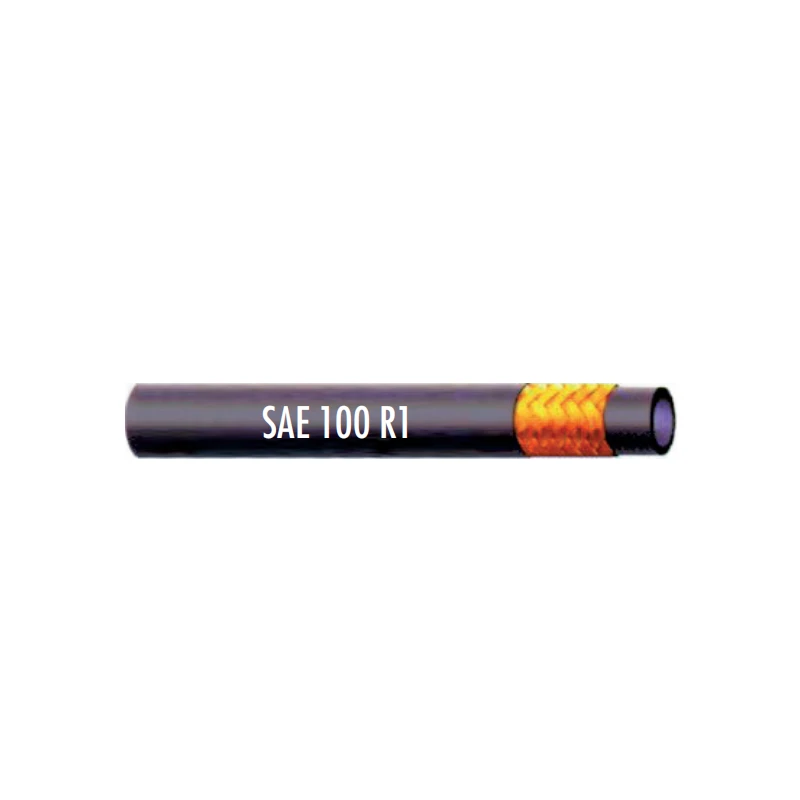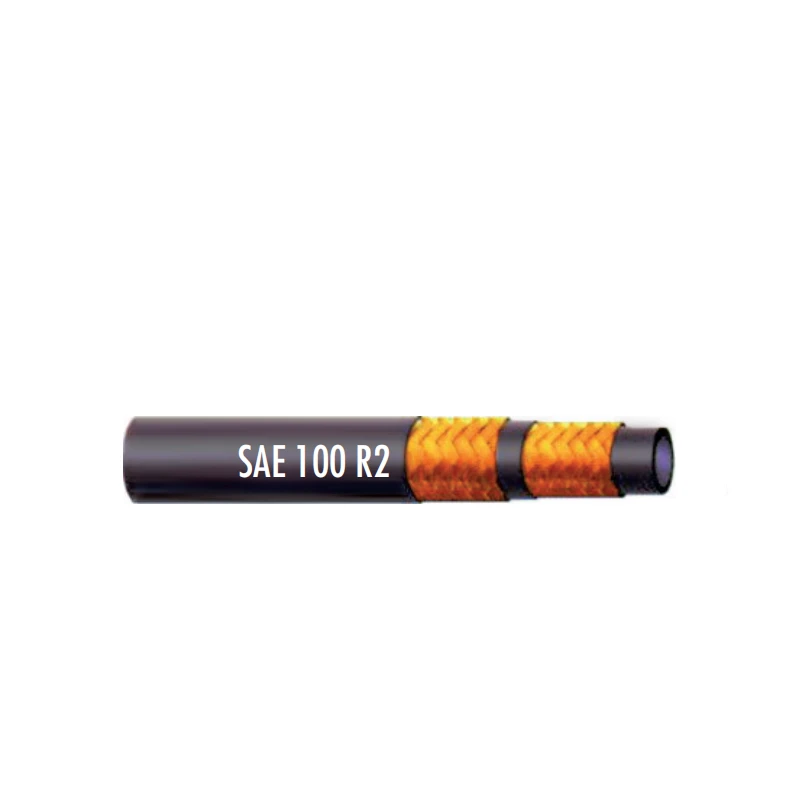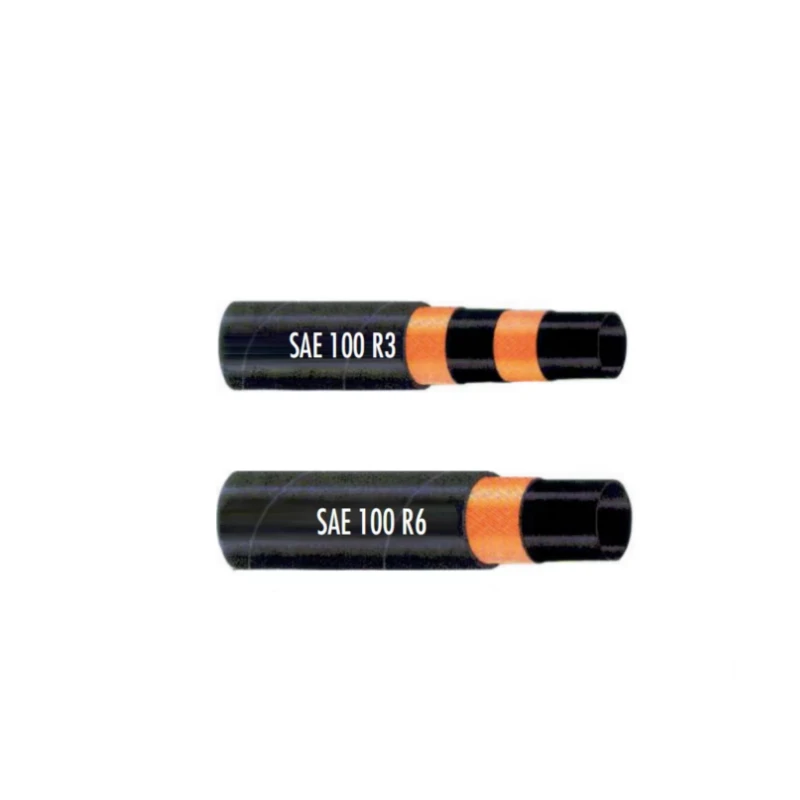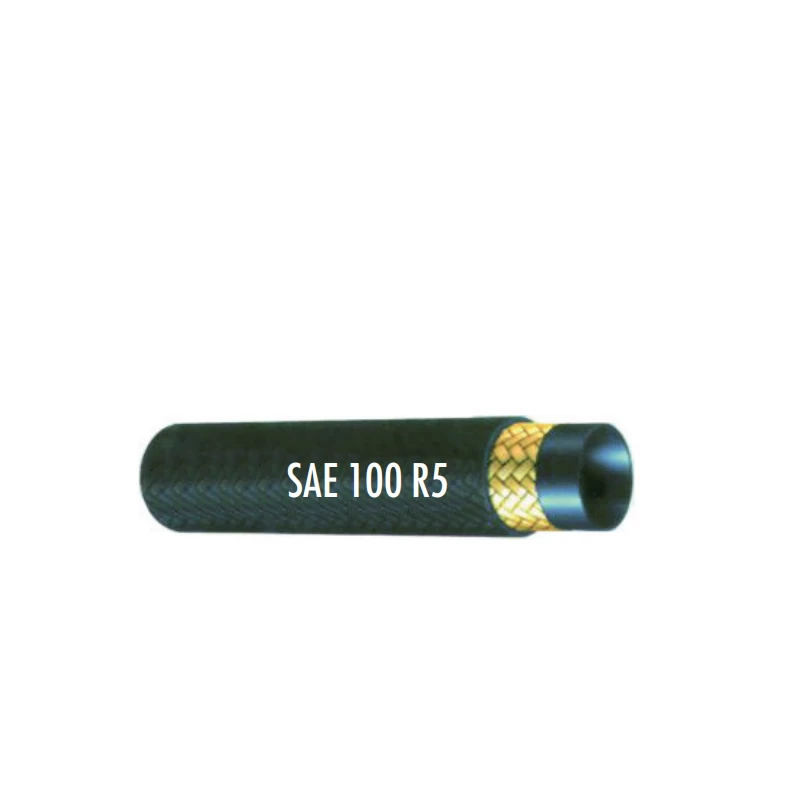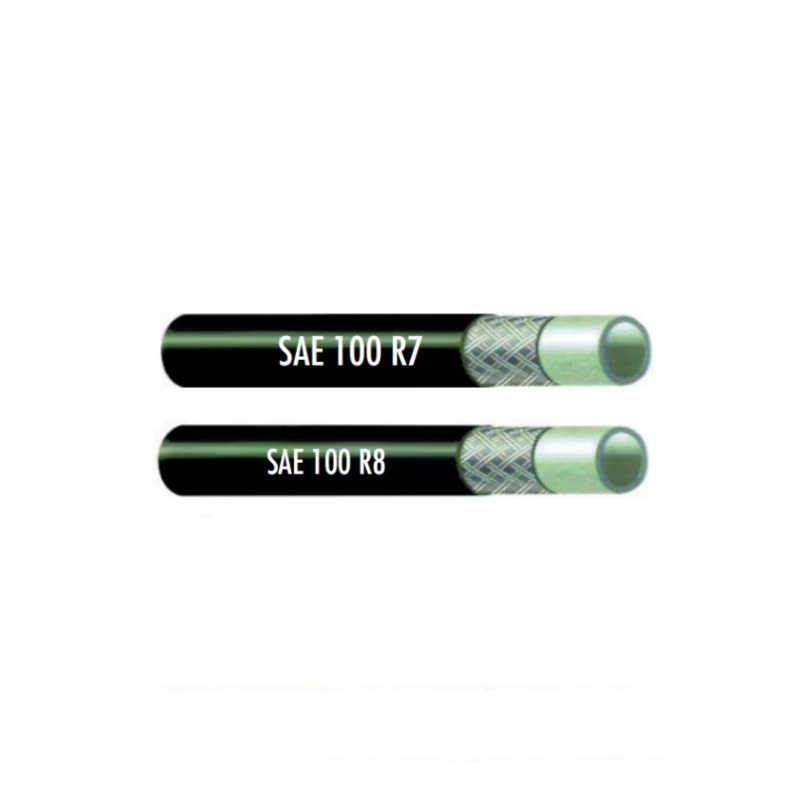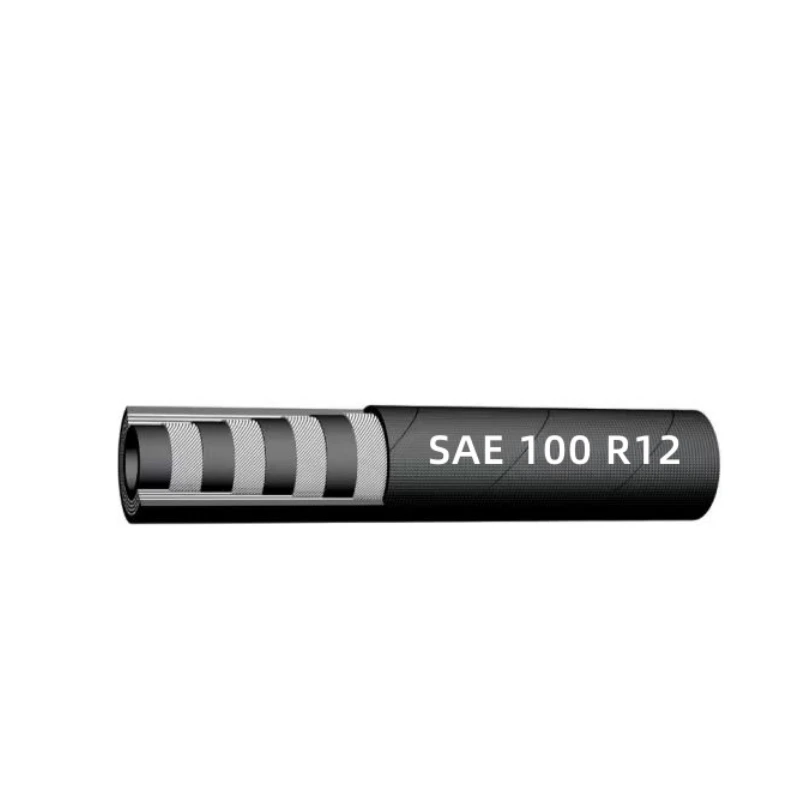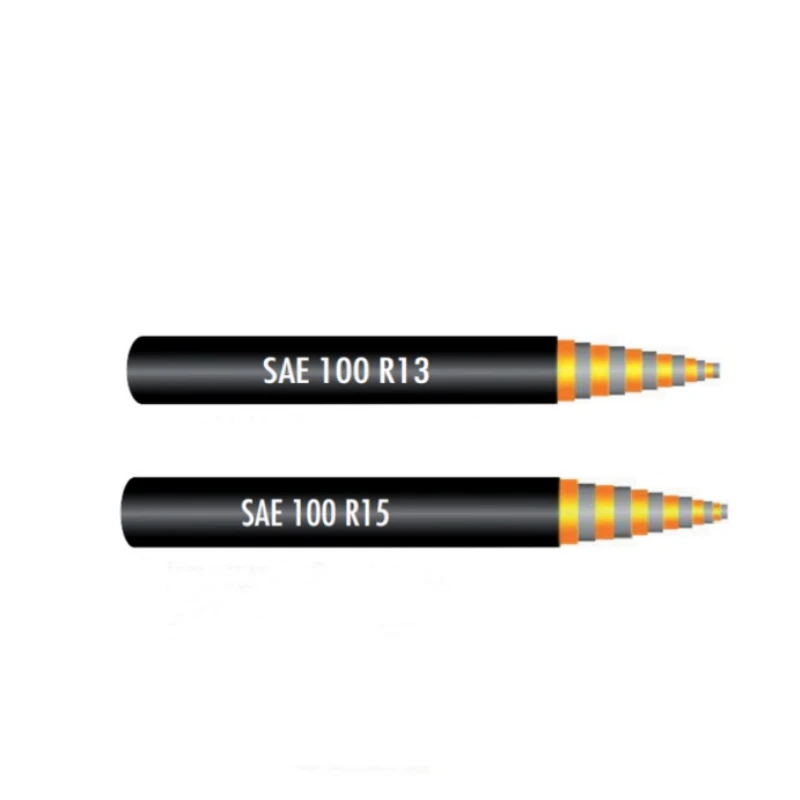In the relentless evolution of hydraulic systems, the demand for components that are smaller, lighter, and more flexible—without sacrificing power or durability—has become paramount. This industry-wide shift has championed the rise of the sae 100r17 hydraulic hose. This guide provides an exhaustive analysis of the **sae 100r17 hose**, exploring its technical specifications, manufacturing intricacies, application advantages, and why it's becoming the standard for modern high-pressure hydraulic circuits.
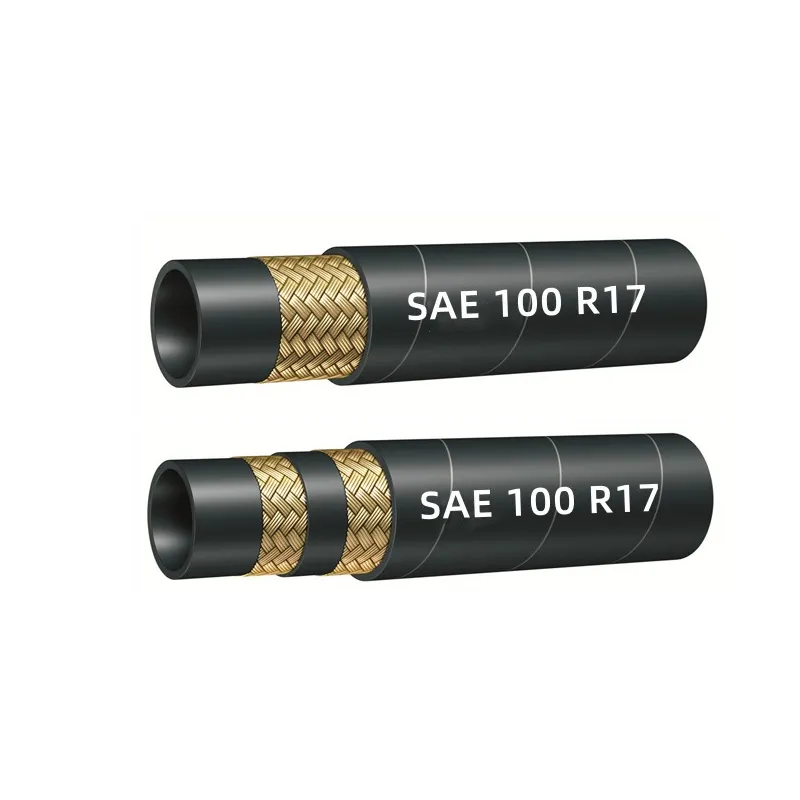
The Market Shift: Why Compact Hoses Like SAE 100R17 are Dominating
The global hydraulic hose market, valued at over USD 12 billion, is experiencing a significant technological transition. End-users in construction, agriculture, and manufacturing are adopting machinery that is increasingly compact and energy-efficient. This trend places new constraints on hydraulic routing, where traditional, bulky hoses like SAE 100R1 and R2 are often too rigid or have an excessively large outer diameter.
The sae 100r17 standard, defined by the Society of Automotive Engineers (SAE) in their J517 standard, was created specifically to address these challenges. Key industry trends driving its adoption include:
- Miniaturization of Equipment: As excavators, skid steers, and industrial robots become smaller, the space available for hydraulic lines shrinks, demanding hoses with a smaller outer diameter (O.D.) and a superior bend radius.
- Constant Pressure Demand: Modern systems often require a consistent pressure rating across different hose sizes to simplify design and inventory. The sae 100r17 hydraulic hose offers a constant working pressure of 21 MPa (3050 PSI) across most sizes, a significant design advantage.
- Increased Efficiency and Reduced Downtime: A hose with a higher impulse life, like the sae 100r17, withstands pressure cycles for longer, reducing the frequency of replacements and costly operational downtime. Its flexibility also makes installation faster and less prone to kinking.
- Higher Abrasion Resistance: With tighter routing, hoses are more likely to rub against other components. Advanced cover compounds, often MSHA (Mine Safety and Health Administration) approved, provide the necessary durability.
Technical Deep Dive: Deconstructing the SAE 100R17 Standard
To truly appreciate the value of an sae 100r17 hose, we must first understand its core specifications as mandated by SAE J517. These parameters define its performance capabilities and distinguish it from other hose types.
| Parameter |
Description and Significance |
| Hose I.D. (Inner Diameter) |
The internal size of the hose, which determines flow rate capacity. Measured in inches or millimeters (DN size). |
| Hose O.D. (Outer Diameter) |
A key advantage of sae 100r17. It has a significantly smaller O.D. compared to R1 or R2 hoses of the same I.D., allowing for installation in tight spaces. |
| Constant Working Pressure |
Rated for a consistent 21.0 MPa (3050 PSI) across various sizes (typically from 1/4" to 1"). This simplifies hydraulic system design as engineers don't need to de-rate pressure for larger hose diameters. |
| Minimum Burst Pressure |
Typically 4 times the working pressure (84.0 MPa or 12,200 PSI), providing a critical safety factor against pressure spikes. |
| Minimum Bend Radius |
Another major advantage. R17 hoses have up to 50% smaller bend radius than R2 hoses, enabling tighter routing without kinking or flow restriction, which is crucial for modern machinery. |
| Reinforcement |
One or two braids of high-tensile steel wire. This advanced wire allows for higher pressure ratings with less material, contributing to its compact size and flexibility. |
| Temperature Range |
Typically -40°C to +100°C (-40°F to +212°F), suitable for a vast range of hydraulic fluids and operating environments. |
These specifications are not just numbers; they represent a leap in hydraulic hose technology. The combination of a constant high-pressure rating, reduced dimensions, and enhanced flexibility makes the **sae 100r17 hose** a problem-solver for hydraulic engineers.
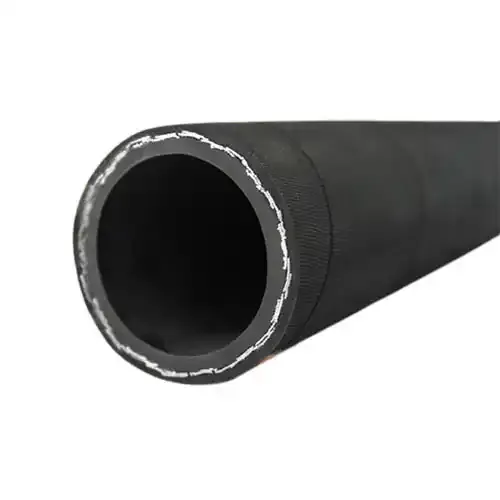
Featured Product: JYHOSE Compact 21MPa SAE 100 R17 Hydraulic Hose
At JYHOSE, we have engineered our Compact 21Mpa Working Pressure Layer or Two Layers Steel Wire Reinforced Hydraulic Hose SAE 100 R17 to not only meet but exceed the baseline standard. We leverage advanced material science and precision manufacturing to deliver a product that offers tangible performance benefits.
Performance Comparison: JYHOSE SAE 100R17 vs. Industry Standards
JYHOSE R17
(Superior Flexibility)
As the chart visually demonstrates, the superior flexibility (smaller bend radius) of our **sae 100r17** hose is a significant engineering advantage. This allows for easier routing, faster assembly, and a reduced likelihood of premature failure due to stress at the fitting.
Technical Specifications of JYHOSE SAE 100 R17
| ID (inch) |
ID (mm) |
OD (mm) |
Working Pressure (MPa/PSI) |
Burst Pressure (MPa/PSI) |
Min. Bend Radius (mm) |
| 1/4" |
6.4 |
12.3 |
21.0 / 3050 |
84.0 / 12200 |
50 |
| 3/8" |
9.5 |
15.7 |
21.0 / 3050 |
84.0 / 12200 |
65 |
| 1/2" |
12.7 |
19.0 |
21.0 / 3050 |
84.0 / 12200 |
90 |
| 5/8" |
15.9 |
22.2 |
21.0 / 3050 |
84.0 / 12200 |
100 |
| 3/4" |
19.1 |
26.4 |
21.0 / 3050 |
84.0 / 12200 |
120 |
| 1" |
25.4 |
33.5 |
21.0 / 3050 |
84.0 / 12200 |
165 |
Manufacturing Excellence: The Journey of an SAE 100R17 Hose
Creating a high-performance sae 100r17 hydraulic hose is a multi-stage process governed by strict quality control under our ISO 9001:2015 certified system. Each step is critical to achieving the final product's superior characteristics.
🔬
1. Raw Material Compounding
We start by blending premium synthetic rubber (Nitrile - NBR) for the inner tube, ensuring excellent resistance to petroleum-based hydraulic fluids. The cover compound is a specialized blend (SBR/NBR) designed for high abrasion, ozone, and weather resistance.
▼
🔩
2. Inner Tube Extrusion
The NBR compound is heated and forced through a die over a precision steel mandrel. This creates a seamless, smooth-bore inner tube with a uniform wall thickness, minimizing flow resistance and pressure drop.
▼
🕸️
3. High-Tensile Steel Wire Braiding
This is the core of the hose's strength. High-speed braiding machines apply one or two layers of high-tensile steel wire at a precise angle. This reinforcement structure is what contains the 21 MPa working pressure and provides impulse resistance.
▼
🛡️
4. Outer Cover Extrusion
The abrasion-resistant cover compound is extruded over the steel reinforcement. Our covers meet or exceed MSHA standards for flame resistance, a critical safety feature for mining and enclosed applications.
▼
🔥
5. Vulcanization (Curing)
The entire hose assembly is wrapped and cured under high pressure and temperature in an autoclave. This process cross-links the rubber molecules, giving the hose its final strength, flexibility, and durability.
▼
✅
6. Quality Control & Testing
Post-curing, every batch undergoes rigorous testing: dimensional checks, proof pressure testing (to 2x working pressure), burst pressure testing on samples, and impulse cycle testing to ensure it exceeds the SAE standard of 200,000 cycles.
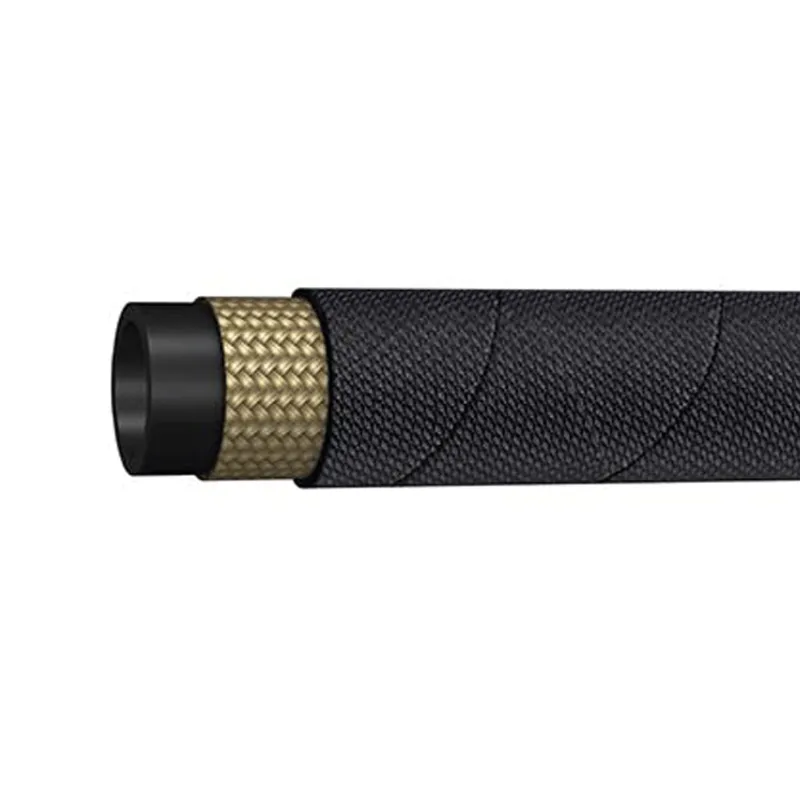
Application Advantages Across Industries
The unique properties of the sae 100r17 hydraulic hose make it an ideal choice for a diverse range of demanding sectors. Its ability to solve common engineering challenges translates into direct benefits for operators and owners.
Construction & Earth Moving
In excavators, loaders, and bulldozers, space is at a premium. The compact size and tight bend radius of the **sae 100r17 hose** allow for routing through complex articulating joints and boom arms without compromising performance or risking abrasion. This leads to more reliable machinery and reduced maintenance.
Agriculture
Modern tractors and harvesters utilize complex hydraulic systems for implements. The constant pressure rating simplifies the design of these systems, while the hose's durability withstands the harsh conditions of fieldwork, including exposure to UV radiation, temperature extremes, and agrochemicals.
Material Handling
Forklifts, aerial work platforms, and cranes rely on hydraulics for lifting and maneuvering. The high impulse resistance of the sae 100r17 ensures a long service life in these high-cycle applications, enhancing safety and operational uptime.
Industrial Machinery
For stationary equipment like injection molding machines, hydraulic presses, and machine tools, the hose's resistance to hydraulic oils and its compact form factor allow for cleaner, more organized, and safer machine layouts. Its anti-corrosion cover protects it in challenging factory environments.
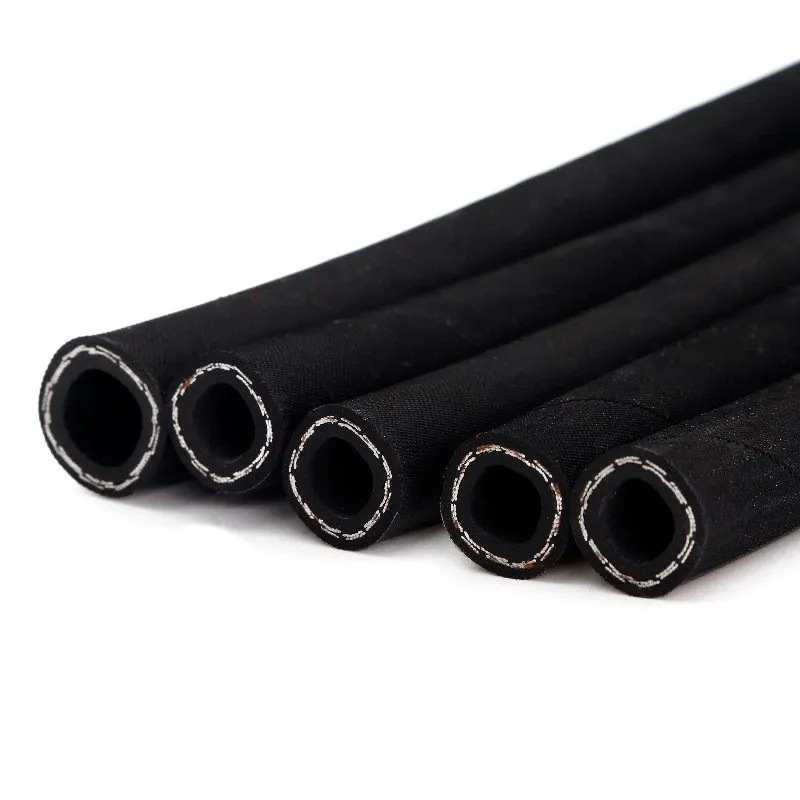
Case Study: TerraBuild Construction Fleet Upgrade
Challenge, Solution, and Results
The Client: TerraBuild Construction, a large-scale civil engineering firm with a fleet of 50+ compact excavators.
The Problem: TerraBuild was experiencing frequent hydraulic hose failures on their excavator boom and stick circuits. The standard SAE 100R2 hoses were failing prematurely due to abrasion from tight routing and stress from constant movement. This resulted in an average of 8 hours of unplanned downtime per machine per month, costing thousands in lost productivity and repair costs.
The Solution: JYHOSE's technical team conducted an on-site assessment and recommended a full fleet upgrade to our sae 100r17 hydraulic hose. The hose's 50% smaller bend radius allowed for routing that eliminated stress points, and its MSHA-approved cover provided superior abrasion resistance.
The Results:
- 90% Reduction in Hose-Related Downtime: Over a six-month monitoring period, hose failures dropped to near-zero.
- Increased Operator Efficiency: The improved flexibility allowed for smoother machine operation and easier maintenance checks.
- Reduced Inventory Costs: The constant pressure rating of the sae 100r17 allowed TerraBuild to consolidate their hose inventory, simplifying procurement and on-site stock.
- Enhanced Safety: Reduced risk of high-pressure fluid injection injuries from burst hoses.
This case study, a testament to real-world experience, solidifies the value proposition of choosing a technologically advanced hose solution.
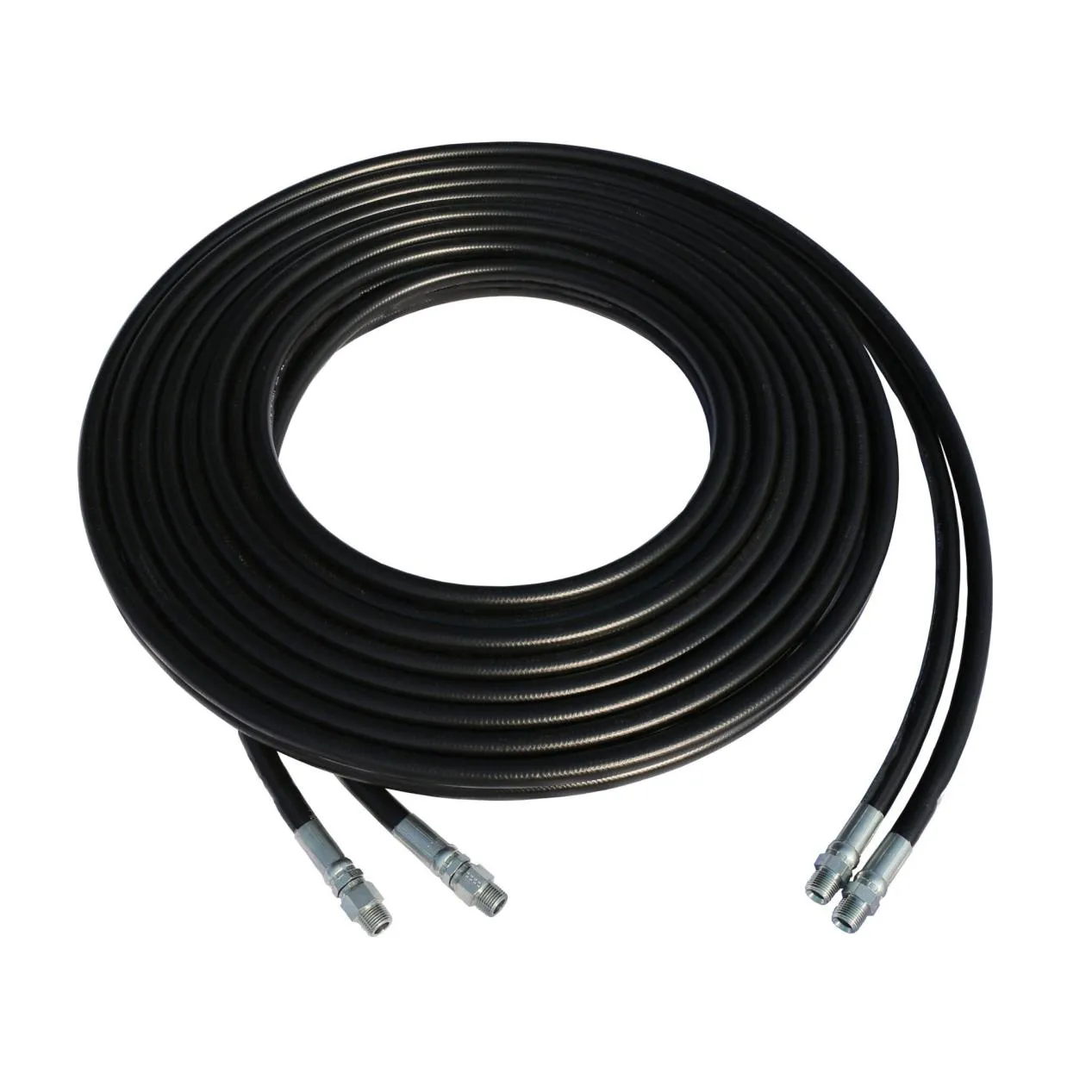
Frequently Asked Questions (FAQ) about SAE 100R17 Hoses
1. What does "constant working pressure" mean for an sae 100r17 hose? ▶
Constant working pressure means that the hose is rated to safely handle the same maximum pressure (21 MPa / 3050 PSI) across a range of different inner diameters (e.g., from 1/4" to 1"). This is a major advantage over traditional hoses where the pressure rating decreases as the hose diameter increases. It simplifies hydraulic system design and inventory management for MRO (Maintenance, Repair, and Operations) teams.
2. What materials are used in your sae 100r17 hose and why? ▶
Our sae 100r17 hose uses a three-part construction:
• Inner Tube: Nitrile (NBR) synthetic rubber, chosen for its excellent compatibility with petroleum-based hydraulic fluids, mineral oils, and greases.
• Reinforcement: One or two braids of high-tensile steel wire. This advanced steel provides immense strength with less bulk compared to older hose designs.
• Outer Cover: A robust synthetic rubber blend (often Neoprene or a SBR/NBR mix), which is MSHA-approved for flame resistance and highly resistant to abrasion, ozone, and weathering.
3. How does the bend radius of R17 compare to R1AT or R2AT hoses? ▶
The difference is significant. A sae 100r17 hose can have a minimum bend radius that is up to 50% smaller (tighter) than an SAE 100R2AT hose of the same inner diameter. For example, a 1/2" R2AT hose may have a bend radius of 180mm, while a 1/2" R17 hose has a bend radius of just 90mm. This allows for much more compact routing without kinking the hose, which would restrict flow and damage the reinforcement.
4. What fluids are compatible with this sae 100r17 hydraulic hose? ▶
Thanks to its NBR inner tube, the hose is compatible with a wide array of fluids, including petroleum-based hydraulic fluids (ISO HH, HL, HM, HR, HV, HG), water-glycol fluids, water-oil emulsion fluids, and lubricating oils. It is generally not recommended for phosphate-ester based fluids or fluids with high aromatic content unless specified. Always consult the fluid compatibility chart or our technical support for specific applications.
5. What are the key installation considerations for maximizing hose life? ▶
To maximize service life, avoid twisting the hose during installation—ensure the layline is straight. Route the hose to avoid sharp bends right at the fitting. Use proper clamps to secure the hose and prevent it from rubbing against abrasive surfaces. Never exceed the specified minimum bend radius. Ensure the fittings are correctly crimped using manufacturer-specified equipment and dies.
6. What is the typical service life, and what factors affect it? ▶
Service life is not a fixed time but is dependent on application conditions. Our sae 100r17 hose is designed for a very long service life, exceeding the 200,000 impulse cycles required by the standard. Factors that can reduce life include: operating above the maximum temperature, pressure spikes exceeding the working pressure, using incompatible fluids, external abrasion, and improper installation (e.g., twisting or bending too sharply).
7. Is your sae 100r17 hose MSHA approved? What does that mean? ▶
Yes, our hose cover is MSHA (Mine Safety and Health Administration) approved. This is a critical safety certification indicating that the hose cover has passed rigorous testing for flame resistance (CFR 30, Part 7, Subpart K). This makes it suitable and safe for use in underground mining operations and other environments where fire hazards are a significant concern.
Trust and Reliability: Our Commitment to Quality
Choosing a hydraulic hose supplier is a decision built on trust. At JYHOSE, we establish this trust through transparency, rigorous quality control, and unwavering customer support. Our authority is built on years of experience and adherence to the highest international standards.
- Authoritativeness & Certification: Our manufacturing facilities are ISO 9001:2015 certified, ensuring every sae 100r17 hose is produced under a system of repeatable, documented quality processes. We reference and adhere to international standards like SAE J517 and ISO 11237.
- Expertise & Experience: Our team of engineers possesses deep knowledge of fluid power dynamics and material science. We don't just sell hoses; we provide solutions based on decades of collective experience in the field.
- Trustworthiness & Support: We stand behind our product with a comprehensive 18-month warranty against manufacturing defects. Our customer support team is available for technical consultations, from initial design to post-installation troubleshooting. We provide clear documentation on delivery times, and our global logistics network ensures timely delivery worldwide.
Conclusion & Industry References
The sae 100r17 hydraulic hose is more than just a component; it is an enabler of modern engineering. Its development represents a direct response to the industry's need for more power in smaller packages. With its constant pressure rating, exceptional flexibility, and compact design, it offers unparalleled advantages in system design, installation, and long-term reliability.
By choosing a premium manufacturer like JYHOSE, you are investing in a product that has been meticulously engineered and rigorously tested to perform in the most demanding conditions.
Further Reading & Community Discussion:







